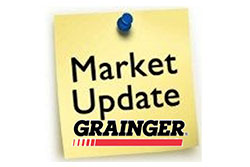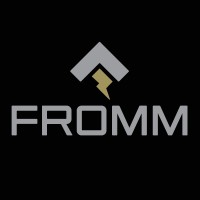eCommerce Product Content is King
 When times are tough people often say “cash is king”. This can frequently determine which companies survive and thrive during difficult economic times and those that suffer. Nowadays, as companies ramp up their eCommerce initiatives product content is king.
When times are tough people often say “cash is king”. This can frequently determine which companies survive and thrive during difficult economic times and those that suffer. Nowadays, as companies ramp up their eCommerce initiatives product content is king.
This is occurring for two reasons:
- Quality, robust product content delivers on customer expectations. These expectations are defined as “all the information I need to make a decision” and represents the “seller” (defined as the manufacturer’s product) in the terms of how they want to be represented. This is what Amazon does … the seller controls the customer’s experience.
- Companies need quantity on their websites. Customers expect to be able to search and/or buy whatever they need electronically or via contacting a salesperson. This is the essence of an omni-channel experience. And “the quantity” must be updated regularly and new products added regularly (and old ones deleted.)
As an example, we know of a company that had about 5000 SKUs on their site. Had respectable sales. Over the past year or so they decided to focus on this segment of their business and now have over 100,000 SKUs on their site. Their online business’ growth rate has significantly exceeded their off-line business. Why? More SKUs improves the SEO, making the company more likely to generate awareness amongst online buyer. More SKUs provides more items for people to buy. Where did they get the SKUs? For the most part they added information from their current suppliers. After all, they can order from the supplier catalog … they didn’t need to limit their online offering to the items in their warehouse.
The days of considering having 5000-10,000, maybe 20,000 SKUs on your catalog are gone. While customers may not purchase, they want information … and lots of it. And sometimes they will buy. With companies investing into eCommerce systems they are also investing into content. Either working with providers that can provide vast arrays of content (and hopefully keep it updated) or increasingly investing into personnel and tools to solicit information from a combination of outside resources and manufacturers.
Consider:
- Codale offers over 140,000 items
- Graybar has over 65,000 items excluding datacom and security products (and it should be noted that Graybar has one of the industry’s most disciplined line card.)
- Platt promotes over 50,000 SKUs on its site
- Crescent offers over 550,000 SKUs
So, if product content is king, where do get the content, other than going “one-on-one” to your manufacturers?
After reading AD’s announcement in late May that it had 3 million SKUs available through its eContent Services for its members, we reached out to the various product content providers in the electrical industry and inquired about the number of SKUs that they each offered. The below information is as of late June (2018) and the companies are listed alphabetically.
| Category | DDS Provided Information |
| # SKUs offered with eCommerce content | 2,674,480 |
| # available photos | 7,338,329 |
| $ available .pdfs | 8,011,341 |
| # manufacturers | 655 |
| # brands | 1057 |
| Pricing model | Subscription |
| Additional Information | Subscription cost includes matching to distributor product file and monthly content updates / additions. Will source additional “niche” manufacturers at no extra cost. |
| Category | IDEA Provided Information |
| # SKUs offered with eCommerce content | 1,700,000 populated with 43 fields |
| # available photos | 1,400,000 |
| $ available .pdfs | 2,300,000 |
| # manufacturers | 225 |
| # brands | 1000+ |
| Pricing model | 3 subscription models for distributors – Core, Catalog and Catalog Plus |
| Category | Trade Service Provided Information |
| # SKUs offered with eCommerce content | 1,000,000+ |
| # available photos | Up to 5 million |
| $ available .pdfs | Up to 5 million |
| # manufacturers | 700+ |
| # brands | 700+ |
| Pricing model | eCommerce content available on per SKU basis. Can contract for maintenance |
| Additional Information | Have built over 1,000,000 SKUs in the electrical industry, Standard spec is up to 5 product images and often 4-10 attachments consisting of spec pages, catalog pages, MSDS pages, installation instructions, warranty documents, videos, BIM models, CAD drawings, etc.
Also provide almost 350,000 SKUs to IMARK webstore database. |
| Category | Unilog Provided Information |
| # SKUs offered with eCommerce content | 1,570,000 |
| # available photos | 2,457,147 |
| $ available .pdfs | 2,489,032 |
| # manufacturers | 2,004 |
| # brands | 3549 |
| Pricing model | We offer all: custom scope of work projects, pricing / SKU, subscription models. |
We also asked AD if they could share the number of its SKUs that were electrical versus other industries that AD is in and what percent of the data is for manufacturers in the group vs those outside the group (is the product content representative of the buyers needs or focused on supporting the manufacturers in the group since they help fund the initiative?). Ted Simpson, SVP Marketing for AD, commented:
“We don’t share those numbers with the media. But what I can tell you is that of the 189 AD Member subscribers over 25% of them access AD produced eContent across more than one industry or country. Additionally, AD Members receive a discount on their monthly membership fee when they access SKUs across industries. As you point out, you need to have the SKUs available – but they also have to be of high quality. We strive to hit critical mass to the product categories that our Members’ sell across all of our participating industries. And we continue to invest to expand our eContent even farther than the 3 Million SKUs milestone.”
Manufacturers are confused when, and why, others “enhance” their content as they feel that they are “keepers of their brand”, “know their products” and are concerned in some cases regarding liability. The key is ensuring that all of a manufacturer’s assets … product information, supporting literature, graphics, installation information, et al are presented, otherwise the customer may need to go to the manufacturer’s site to be a source for the information while the distributor’s site is left solely for price and inventory look-up and perhaps to purchase the item.
So, the question then becomes, how to evaluate content suppliers?
Some suggestions:
- Line card alignment (all should be able to meet)
- Willingness to cost-effectively source more
- # SKUs for key lines
- Ease of doing business (which includes ease of integrating the information into your eCommerce platform)
- Maintenance of the content (at the risk of a Yogiism, “your customers don’t want outdated / wrong content”. Why? It could be a liability for you and them plus why go to a website with outdated information?)
- SEO benefits (more information, more opportunity for SEO and driving traffic to your site)
- Maximize content for your budget
- Content source (direct from manufacturer?)
- Adaptability (can it fit your system? Any system?)
- Cost-effectiveness (want the most SKUs for the least cost, ideally while maintained)
- Conduct “random” content checks among providers on a number of SKUs. Hopefully there will be consistency in information (maybe a change in format). Consider this the “market basket analysis”, just like when a distributor quotes a customer contract. If a supplier isn’t willing to do, what are they concerned about?
And like any kingdom, it needs continual investment.
How much content is on your site? What are your customers looking for? What questions do you / do you think you should or have you asked content providers?






















